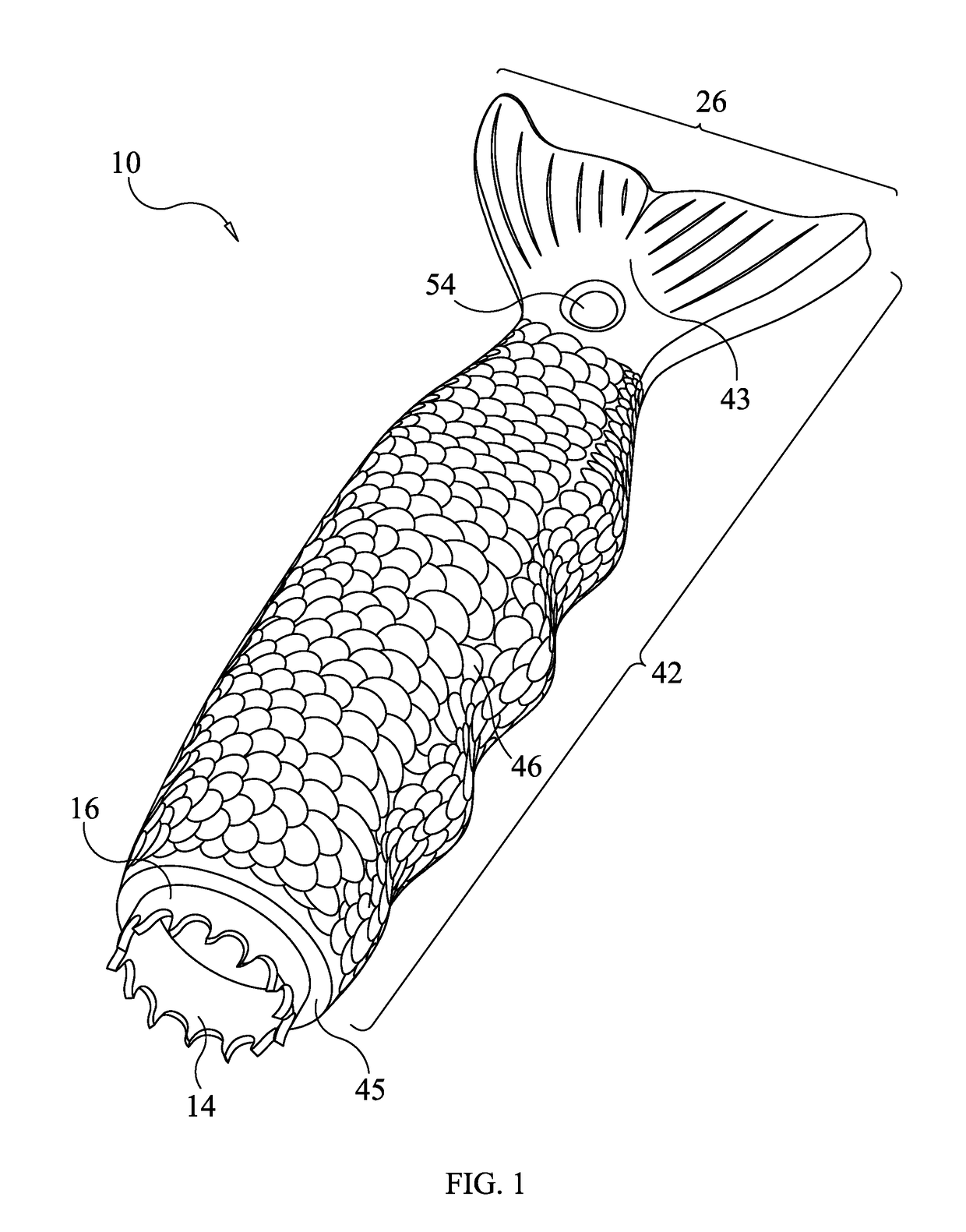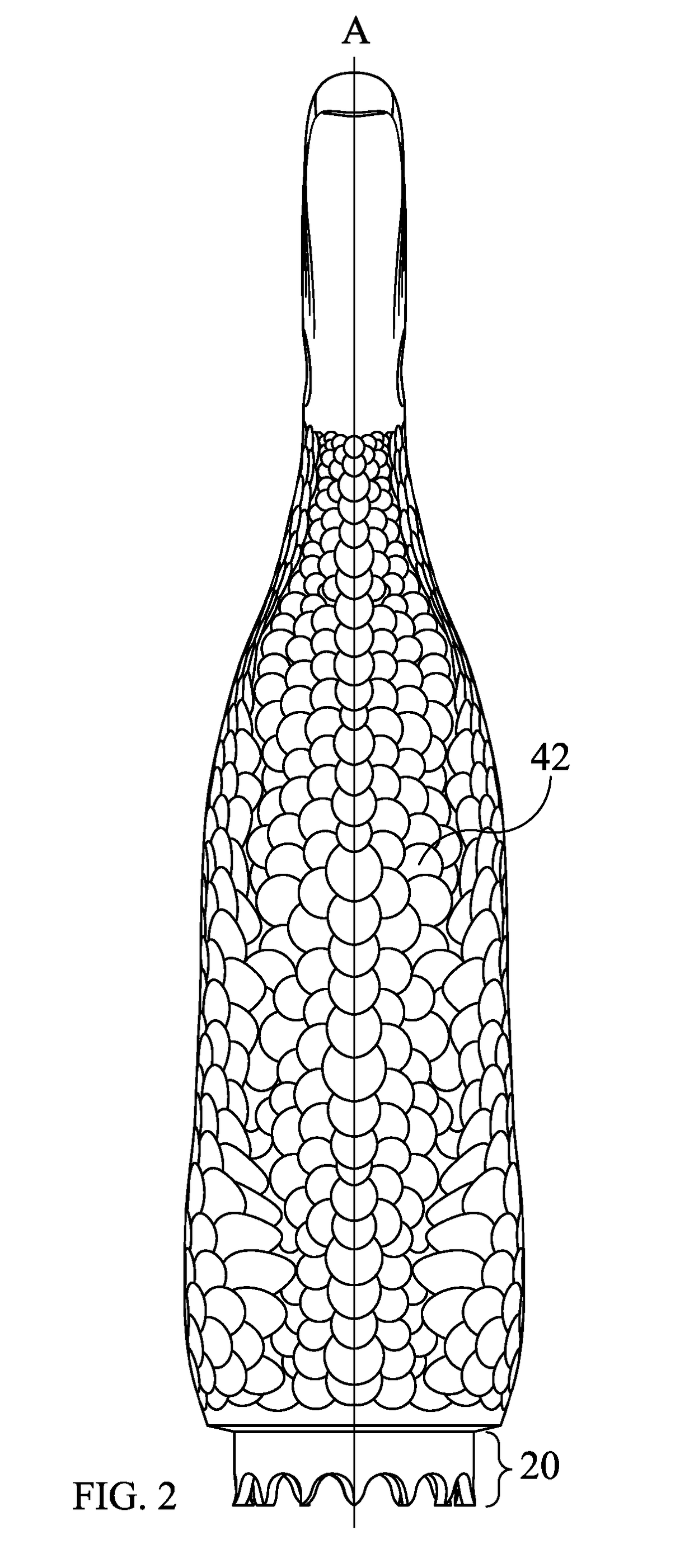Fish securing device for cleaning fish
- Summary
- Abstract
- Description
- Claims
- Application Information
AI Technical Summary
Benefits of technology
Problems solved by technology
Method used
Image
Examples
Embodiment Construction
[0035]With reference to the drawings wherein like numerals represent like parts throughout the several Figures, a fish securing device is generally designated by the number 10. Fish securing device 10 is especially adapted for securing a portion of a fish or its skin in a manner which permits the user to secure the fish or skin and hold it against a cutting surface at the same time a cutting instrument, such as a knife, is used to carry out any task necessary to clean the fish, such as filleting, skinning, gutting and / or scaling. The fish securing device 10 is adapted for continuous durable usage in a fishing or food preparation environment providing freedom and fluidity of movement for the user and user's hands, ability to readily engage various fish types and thickness during a fish cleaning process, and is easily cleaned and maintained along with the knife and other tools employed in the cleaning of fish, preparing of fish, or fishing in general.
[0036]The fish securing device 10 ...
PUM
 Login to View More
Login to View More Abstract
Description
Claims
Application Information
 Login to View More
Login to View More - R&D
- Intellectual Property
- Life Sciences
- Materials
- Tech Scout
- Unparalleled Data Quality
- Higher Quality Content
- 60% Fewer Hallucinations
Browse by: Latest US Patents, China's latest patents, Technical Efficacy Thesaurus, Application Domain, Technology Topic, Popular Technical Reports.
© 2025 PatSnap. All rights reserved.Legal|Privacy policy|Modern Slavery Act Transparency Statement|Sitemap|About US| Contact US: help@patsnap.com



